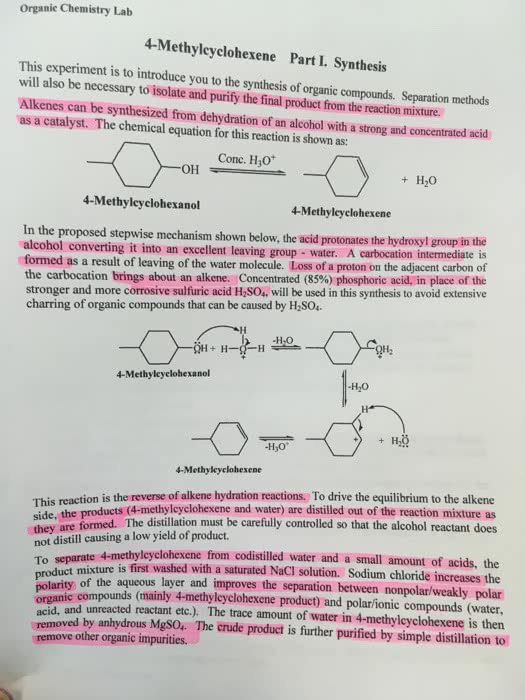CHM247H1 Lecture Notes - Lecture 1: Infrared Spectroscopy, Butene, Sand Bath
166 views3 pages
Document Summary
The main reaction involved dehydrating t-amyl alcohol with an acid catalyst to create a mixture of alkene products (2-methyl-2-butene, 2-methyl-1-butene), the products were then isolated through distillation and identified using gc analysis. T-amyl alcohol dehydration is a reversible reaction, and therefore distillation was used to push the reaction to the product side and ensure maximum yield by removing the products from solution as they were produced. Sulfuric acid was used as a catalyst to speed up the reaction time, reduce energy and excess chemical use. As the reaction proceeded a thermometer was placed at the lower edge of the condenser arm to monitor boiling point range and signal the end of the reaction when a sudden drop occurred. The crude product was washed twice, and then dried to prepare it for gc analysis. Gc analysis was used to identify the percent yield of each alkene product. Using ir spectroscopy, 1h nmr and deductive reasoning four unknowns, c5h12o; c7h6o;
Get access
Grade+20% off
$8 USD/m$10 USD/m
Billed $96 USD annually

Homework Help
Study Guides
Textbook Solutions
Class Notes
Textbook Notes
Booster Class
40 Verified Answers
Class+
$8 USD/m
Billed $96 USD annually

Homework Help
Study Guides
Textbook Solutions
Class Notes
Textbook Notes
Booster Class
30 Verified Answers

